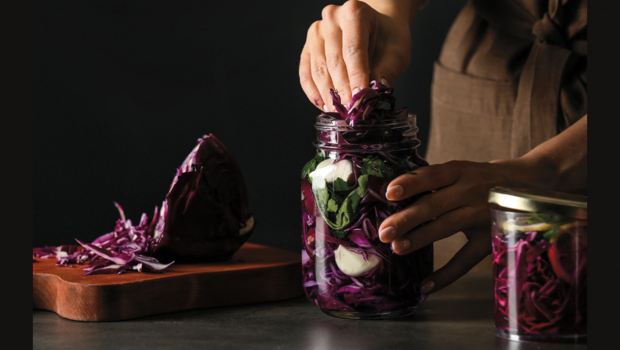Fermenting for Foodies: Preserving Food and Traditions
If fermented food is a trend, it’s the oldest one on the planet. More and more people are rediscovering the time-honored foodways of fermentation to promote health, boost flavor and preserve the bounty of the seasons. “There is huge potential to use high-quality fermented foods to enhance our health and well-being,” says Sandor Katz, a so-called “fermentation revivalist”, in Liberty, Tennessee, and the author of several bestselling books on fermentation, including the newly released Sandor Katz’s Fermentation Journeys: Recipes, Techniques, and Traditions from Around the World.
Katz caught the fermentation bug after moving from New York City to rural Tennessee in the 1990s and being faced with the “positive problem” of an overly plentiful garden to preserve. He’s since wandered the globe teaching and learning about fermentation traditions, from Korea’s spicy kimchi to Mexico’s funky pineapple tepache drink.
Fermentation is defined as the chemical breakdown of a food by bacteria, yeasts or other microorganisms. An estimated one-third of all foods are fermented, including coffee, cured meats, cheese, condiments and chocolate. Pickles and yogurt are traditionally fermented through lactic acid bacteria, while beer and bread are typically fermented through yeast. Kombucha, an ancient tea drink, is made using a symbiotic culture of yeast and bacteria.
Pascal Baudar, a Los Angeles writer, instructor and self-proclaimed “culinary alchemist,” turned to fermentation techniques to preserve the precious wild ingredients of the fleeting seasons. His books and workshops cover unusual culinary territory, like fermented and aged vegan cheeses from acorns and “seaweed” made from fermented broadleaf plantain, a common weed, using methods he’s studied and perfected. “I investigate new and lost flavors, and conserve them as gourmet foods through preservation,” he says.
Fermentation with Benefits
Fermentation transforms the nutrients in food in several ways, Katz explains. In a process known as predigestion, it breaks macronutrients down into more digestible forms (think proteins turned into amino acids) and renders minerals more bioavailable. Gluten, too, is broken down by fermentation, he says, as are potentially toxic compounds in foods such as cyanide and oxalic acid. The process also releases vitamins B and K and other micronutrients as metabolic byproducts.
Fermentation reduces the short-chain carbohydrates that are poorly absorbed in the small intestine and are prone to absorb water and ferment in the colon, causing gas and bloating. Found in wheat, beans and other foods, they can pose digestive problems for people with irritable bowel syndrome and other conditions, says Tayler Silfverduk, a registered dietitian nutritionist in Columbus, Ohio, specializing in celiac disease.
“The most profound nutritional benefit of fermentation is the live bacteria itself. You are ingesting a rich biodiversity of beneficial bacteria that can potentially improve immune function,” says Katz, an AIDS survivor who considers fermentation an important part of his healing process.
No Starter Required
“There is nothing you can eat that can’t be fermented, but the easiest and safest place to begin is with vegetables,” which need no special equipment or a starter like sourdough, kefir or kombucha, says Katz. To make sauerkraut, for example, simply shred cabbage, lightly salt and season it, and submerge it in a jar under its own juices, “burping” it daily for a week to 10 days to release the fermentation gases.
Katz and Baudar both like to debunk myths that fermenting foods is difficult or dangerous. “You don’t have to sterilize everything or have precise laboratory control conditions. People have been practicing fermentation for years, and they began before they knew bacteria was a thing. To the contrary, fermentation is a strategy for food safety,” says Katz.
While yeast or mold can grow on the top layer that is exposed to oxygen, Katz says “a lot of sauerkraut is needlessly discarded. Most such growth is harmless and normal, and can be skimmed off the top.”
Baudar, a University of California Master Food Preserver, has kept foods he’s fermented for up to three years and only once encountered mold. “You need to work with the ferment,” he says. “That means regularly burping it, then shaking or stirring to promote the acidity that prevents bad bacteria from taking hold.”
“If it looks or tastes bad, throw it away,” he adds. “Some of my early experiments tasted horrible, but I just took my failures as learning and kept experimenting. The more you understand the fermentation process, the more you can play with it creatively and push the envelope.”
Connect with Washington, D.C., freelance writer April Thompson.





























